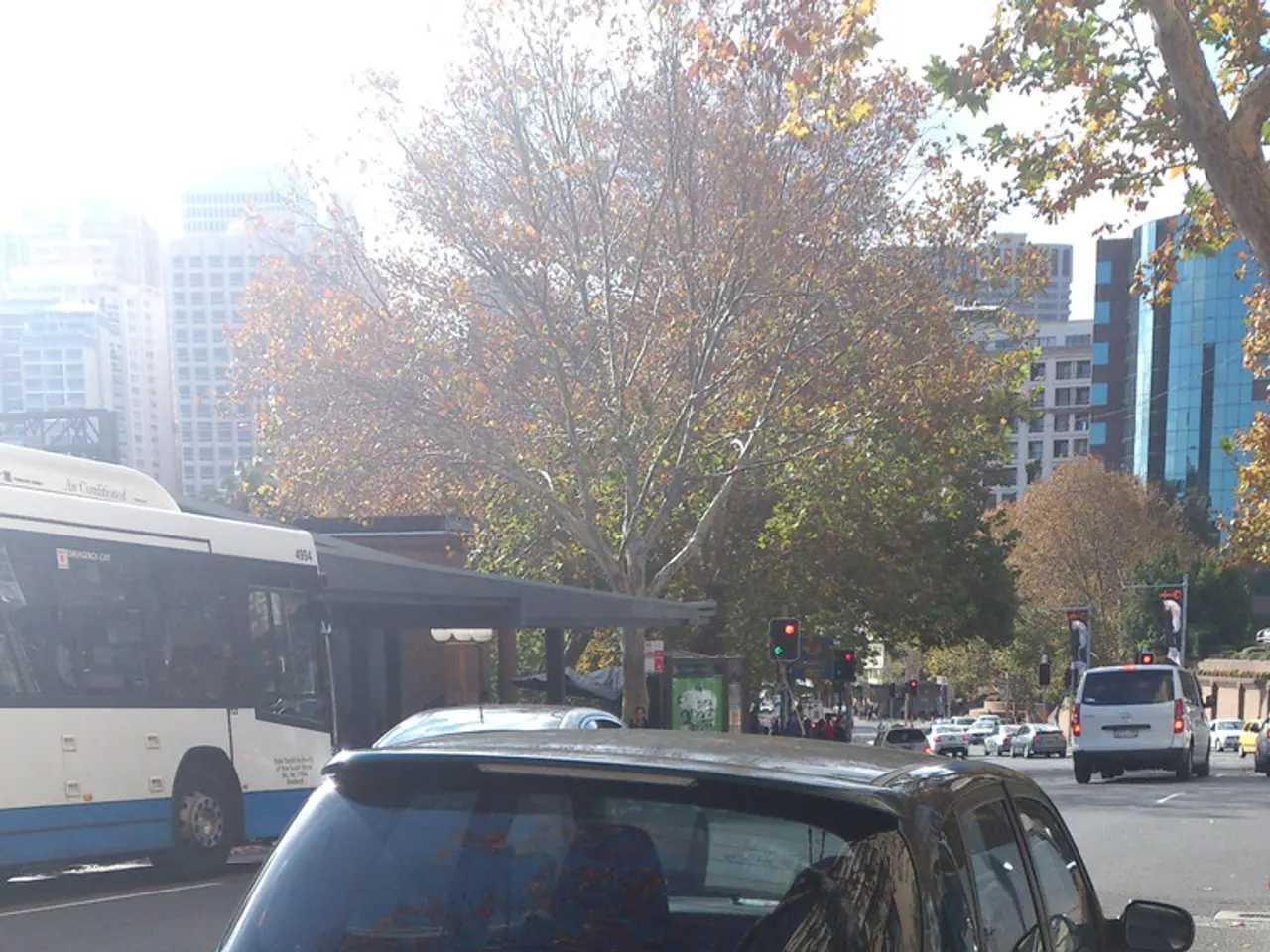Advancements Propelling Modern Smart Traffic Management: An Examination of 7 Pivotal Technologies
Intelligent Transport Systems (ITS) are revolutionizing the way we navigate our urban environments, aiming to improve traffic flow, enhance road safety, and reduce environmental impact. These systems leverage a range of cutting-edge technologies to create an integrated ecosystem that promotes smarter, safer mobility for everyone.
One key component of ITS is the use of Real-time Vehicle Detection. Proximity sensors, cameras, radar, and smart traffic sensors are employed to continuously monitor vehicle flow, providing real-time data for traffic management systems. This allows for efficient control of traffic congestion and optimized travel times.
Another crucial aspect is Adaptive Traffic Signal Control. AI-driven signals dynamically adjust timing based on current traffic density and flow, improving traffic congestion and reducing travel times significantly.
Machine Learning and Predictive Analytics play a vital role in ITS as well. Algorithms analyze traffic patterns and predict congestion or incidents, enabling proactive traffic management and optimizing overall efficiency.
The integration of Vehicle-to-Everything (V2X) Communication is also essential. This technology allows vehicles to communicate with infrastructure, other vehicles, and pedestrians, sharing information that enhances safety and traffic efficiency.
The Internet of Things (IoT) and Big Data Analytics are connected to traffic infrastructure and vehicles, providing real-time decision-making capabilities and long-term traffic pattern analysis.
Advanced Driver Assistance Systems (ADAS) are vehicle-based sensors and cameras that help prevent accidents by alerting drivers or taking control when necessary.
Smart Digital Junction Systems and Green Routing Technologies are designed to optimize junction traffic flows and provide eco-friendly route planning to reduce emissions and improve efficiency.
Network Connectivity Solutions and Time-Sensitive Networking (TSN) ensure reliable, real-time data transmission required for ITS to operate effectively.
In addition to these technologies, Tech-Driven Car Park Systems are part of ITS, aimed at improving the efficiency of parking management in urban environments.
Automated Mobility Districts, using connected and autonomous vehicle technology, offer safe and efficient alternatives to private car use within high-traffic zones. These districts, found in university campuses, medical centers, or business parks, feature low-speed, driverless shuttles following fixed routes between key destinations, helping to minimize congestion and reduce emissions.
City Traffic Management Systems integrate various transportation sub-systems, applications, and data sources into a single platform for real-time traffic management and congestion reduction.
Intelligent Surveillance and Response Systems are used to enhance road safety by monitoring traffic conditions and responding to incidents in real-time. These systems are crucial for promoting fuel efficiency and contributing to environmental goals by improving travel times and reducing congestion.
The integration of technology-based traffic management systems reduces the workload on traffic operators and contributes to smarter, safer mobility for everyone. With the ongoing development and implementation of ITS, our roads are becoming safer, more efficient, and more environmentally friendly.
- Artificial Intelligence (AI) is utilisied in Adaptive Traffic Signal Control, where AI-driven signals dynamically adjust their timing based on current traffic density and flow to improve traffic congestion and reduce travel times.
- Sustainability is a significant focus in Intelligent Transport Systems (ITS), as Smart Digital Junction Systems and Green Routing Technologies are designed to optimize junction traffic flows and provide eco-friendly route planning to reduce emissions and improve efficiency.
- Data-and-cloud-computing, specifically Big Data Analytics, are integrated into traffic infrastructure and vehicles, providing real-time decision-making capabilities and long-term traffic pattern analysis to optimize ITS.
- Advanced Driver Assistance Systems (ADAS) are a part of ITS, using vehicle-based sensors and cameras to help prevent accidents by alerting drivers or taking control when necessary, contributing to a safer driving environment.




